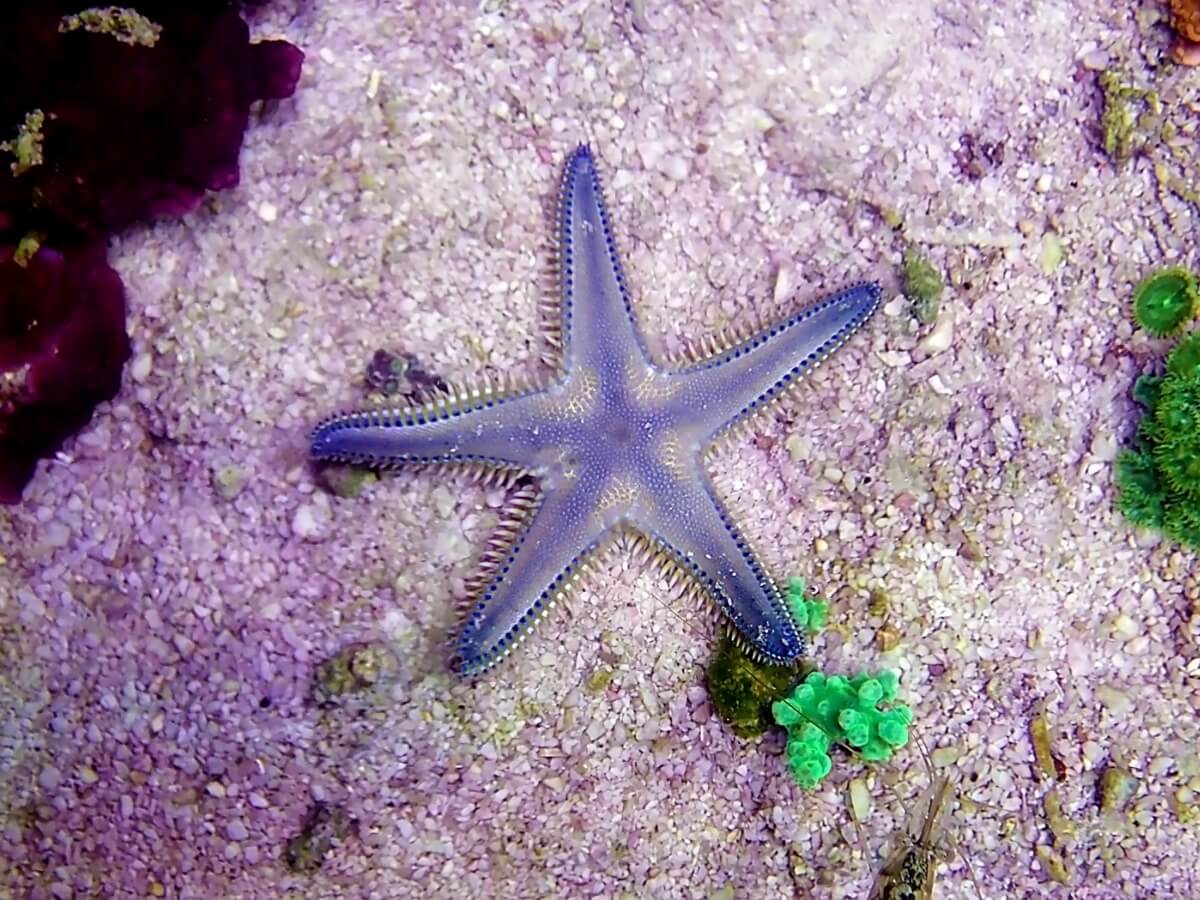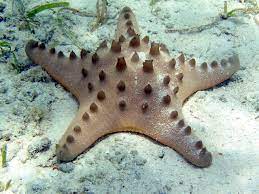Diamond-Like Structure Gives Strength to Some Starfish Skeletons

Starfish are world-famous animals, but not many people realize just how incredible they are. Did you know that they have eyes on the tips of their arms and that there’s a starfish that has a skeleton with a diamond-like structure?
It’s precisely the latter that we’re going to talk about in this article. It’s a recent discovery that has left the team of scientists open-mouthed, because, under the microscope, it looked like an artificially manufactured structure. Don’t go away because we’re going to look into this incredible discovery in the following lines.
Starfish characteristics
What are commonly known as “starfish” or “sea stars” belong to the class Asteroidea, and the phylum of echinoderms. These are animals characterized by pentadial symmetry, a flattened body, and five or more arms. There are about 1900 known species of sea stars.
These animals can regenerate lost limbs, and from these severed limbs a new individual is born.
Starfish inhabit all the world’s oceans and, depending on the species, occupy both benthic habitats and abyssal depths of more than 6000 meters (3.7 miles). Generally, their feeding habits are opportunistic, but there are some exceptions that feed by filter-feeding or even predation, such as Acanthaster planci.
These animals have no blood. Instead of a circulatory system, like that of other animals, they have a hydraulic system with which they circulate water through hydrophore channels to each ambulacral foot (the arms). This facilitates the movement and circulation of oxygen throughout the body of the starfish.

The starfish skeleton
Although echinaceans are sometimes thought of as crustaceans, which have an exoskeleton that protects their internal organs, this isn’t the case. Starfish have an endoskeleton that serves as a cavity for the soft organs, but it’s located under the epidermis.
This endoskeleton is formed by calcareous plates (of calcium carbonate) that aren’t fused together. In this way, they’re able to show a certain flexibility in their arms and move more freely.
The skeleton of sea stars has holes through which you can see the body, forming papules that function as gills. They also have several tiny appendages, called pedicellariae, which they use to keep their bodies free of dirt.
The starfish with a diamond endoskeleton
The calcareous plates that form the endoskeleton of starfish are usually porous and fragile. However, this isn’t the case for the Protoreaster nodosus, also known as the horned sea star, or the chocolate chip sea star.
This star, characterized by the dark protuberances on its body (where the chocolate reference comes from), is also highly resistant to pressure damage. Considering the fragility of calcium carbonate skeletons, the team of Ting Yang and Hongshun Chen set out to study the cell structure to discover what made it an exception.
The results were fascinating: when they observed the ossicles (the microscopic structures that form the starfish’s bony plates) under the electron microscope, they discovered that they were arranged in a very similar way to that of diamond atoms. This almost perfect arrangement is what gave the skeleton its hardness and strength, just as the precious stone is almost unbreakable.
The observation was made at a scale of 50 micrometers, about half the width of a human hair.
A masterpiece of natural engineering
However, this carbon-like arrangement of ossicles in diamond didn’t fully explain the strength of the starfish endoskeleton, as the material was still fragile. Therefore, the research team took a closer look.
Within that structure, the atoms that made up the calcium carbonate also had a special arrangement. In this case, they created a hexagonal pattern, similar to that of a honeycomb. In this way, the intrinsic weakness of this mineral was compensated, further reinforcing the strength of the starfish.
Interesting applications of this discovery

The fact that this starfish has a skeleton with a structure similar to that of diamond opens up interesting avenues for materials engineering. In fact, this same team is now studying living stars of the species Protoreaster nodosus to find out how these bony plates are formed.
Understanding this process would provide information for creating stronger porous materials, such as ceramics. Despite being a primitive creature, the starfish still seems to have a lot to say to our species, so we should never stop listening.
All cited sources were thoroughly reviewed by our team to ensure their quality, reliability, currency, and validity. The bibliography of this article was considered reliable and of academic or scientific accuracy.
- Yang, T., Chen, H., Jia, Z., Deng, Z., Chen, L., Peterman, E. M., … & Li, L. (2022). A damage-tolerant, dual-scale, single-crystalline microlattice in the knobby starfish, Protoreaster nodosus. Science, 375(6581), 647-652.
- WoRMS – World Register of Marine Species – Protoreaster nodosus (Linnaeus, 1758). (s. f.). WoRMS. Recuperado 29 de julio de 2022, de https://www.marinespecies.org/aphia.php?p=taxdetails&id=213285
This text is provided for informational purposes only and does not replace consultation with a professional. If in doubt, consult your specialist.